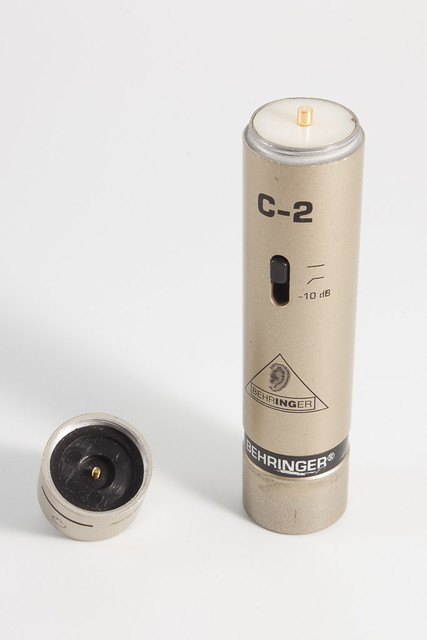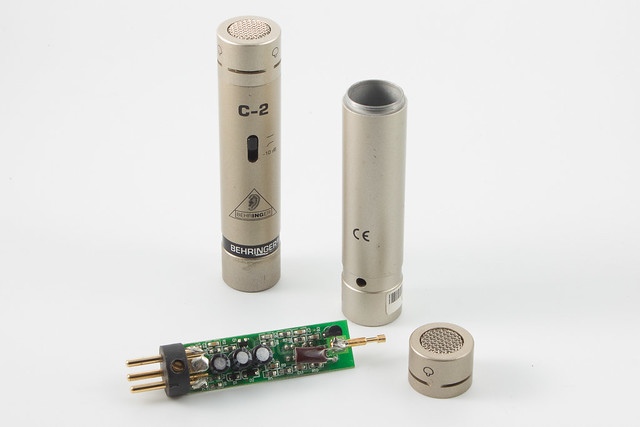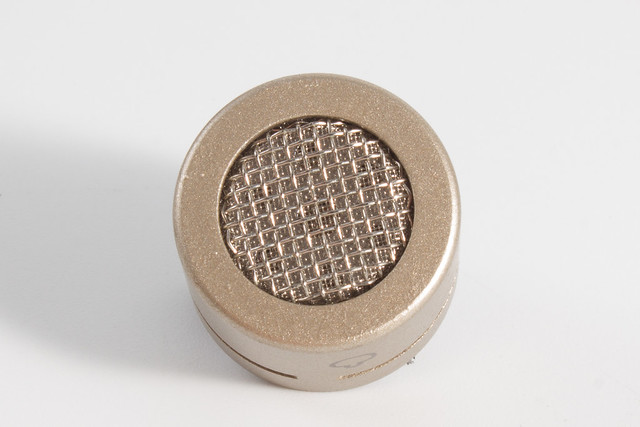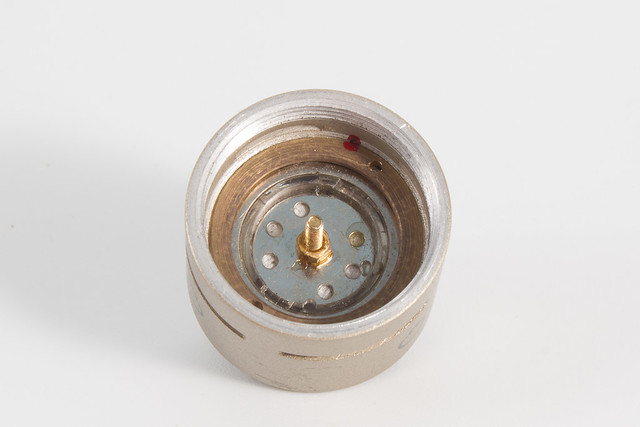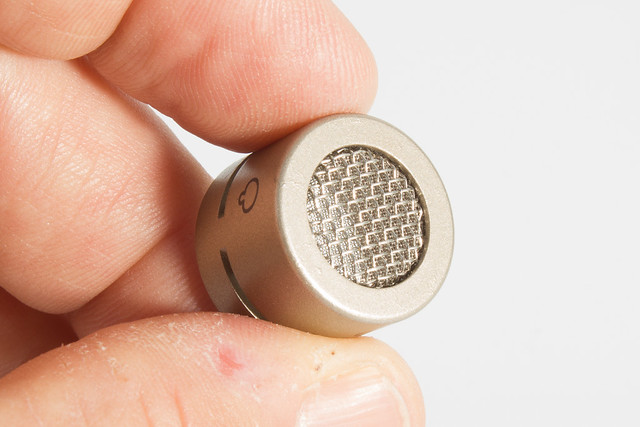This is the second half of a two-part article describing my build of the mid-side Alice microphone, following the Instructable written by Jules Ryckenbusch: Build the MS Alice Stereo Microphone. In Part 1 of this article I ran through how I was planning to build it (mostly following the same steps I used in another two-part series I wrote about another of Jules’s Instructables, Modify a Cheap LDC Condenser Microphone, namely: BM-800 Microphone Conversion Part 1 and Part 2.) I also covered my design for the saddle and post that holds the three capsules in the particular orientations required for Jules’s MS microphone build. (Jules used a different method, using PVC pipe, which you’ll see in his Instructable if you decide to build one of your own.)
Since writing Part 1 all the bits and pieces came in. I was eager to see how the 3D printed saddle and post turned out, and how well the TSB-165A capsules fit.
I designed the cavities for the capsules at-size, meaning I didn’t leave any slop for fit. The plastic Shapeways uses to make their least expensive printed parts is described as “strong and flexible”. I took them up on that, figuring the part would flex enough to allow the capsules to snap into place. It worked like a charm.
The fit is snug, but not snug enough to hold the capsules in use. As with my first Alice, I glued the capsules into the saddle with E-6000 adhesive.
I’m a little disappointed with the handling noise on my first Alice mic. I chalk some of that up to the metal saddle and post, but some of it I chalk up to the relatively stiff wire I used to connect the capsule to the PCB. It was stiff enough that manipulating the wire wound up breaking off one of the ground tabs from the TSB-2555B capsule I used on that mic. Rather than repeat that experience, and in an effort to reduce conduction paths for handling noise, I gutted some of the Mogami cable I use for all my microphone projects and used the wires to connect the capsules. (NOTE: It didn’t actually affect handling noise that much. After thumping various bits of the mic, I’ve come to the conclusion the dominant frequency of the handling noise is driven by the resonant frequency of the mesh in the headbasket.)
I already had two Pimped Alice PCBs built, tuned, and ready to go for this project. The remaining steps were to screw one board onto each side of the mic frame, solder the capsule wires to the boards, solder the four 0.022uF capacitors between the ground pin (pin 1) and the remaining pins of the XLR connector (2, 3, 4, and 5), and to solder wires between the XLR and the PCBs.
Since I oriented the two capsules of the figure-eight mic side-by-side, they won’t fit inside the headbasket with the foam liner in place. So I stripped the foam out before closing up the mic.
The very last step was to build the 5-pin XLR to dual 3-pin XLR splitter cable. There are a number of ways I could’ve done this, but I followed (mostly) Jules’s build on the cable as well, using separate Mogami lavalier cables for each channel. This is a wonderfully floppy wire, and does an excellent job of reducing handling noise transmitted through the cable.
The one change I made to Jules’s design was to jacket the central eight feet of cable in a woven sleeve to keep it from tangling.
I left the last foot and a half at each end loose, though, to take advantage of the wire’s floppiness. (Hey, that’s actually a word spellcheck recognizes!)
And at long long last I’m able to play with mid-side recording and compare it against my EM-172 based SASS.
https://soundcloud.com/tnbenedict/kiholo-bay-sass-vs-m-s
Big big thanks to the following for making this all possible:
- Jules Ryckenbusch – for writing the two Instructables that got me going on these microphones
- Homero Leal – for coming up with the PCB layout for the Alice boards used in Jules’s Instructables
- Scott Helmke – for designing the Alice circuit in the first place
- Ricardo Lee and all of the above – for their endless patience with all of my questions and what-ifs
- Dr. Ing – for designing the Schoeps CMC-5 in the first place, without which none of this would exist
For my own contribution, here’s the link to the MS Alice capsule saddle and post on Shapeways. I’ve listed these at-cost, with no mark up (meaning I don’t see a dime of the 5.35 USD price tag at the time of this writing – labor of love).
Have fun recording!
Tom










